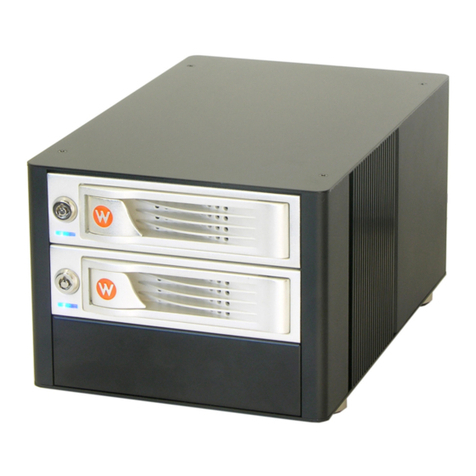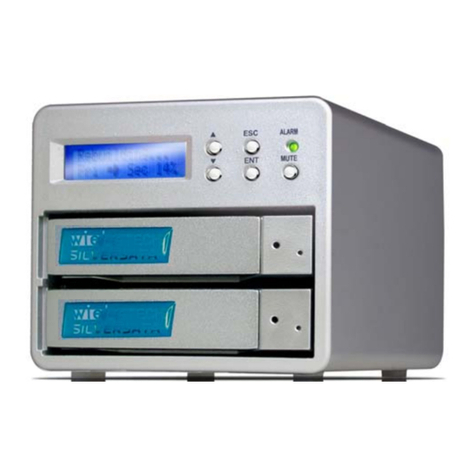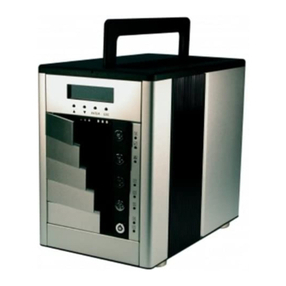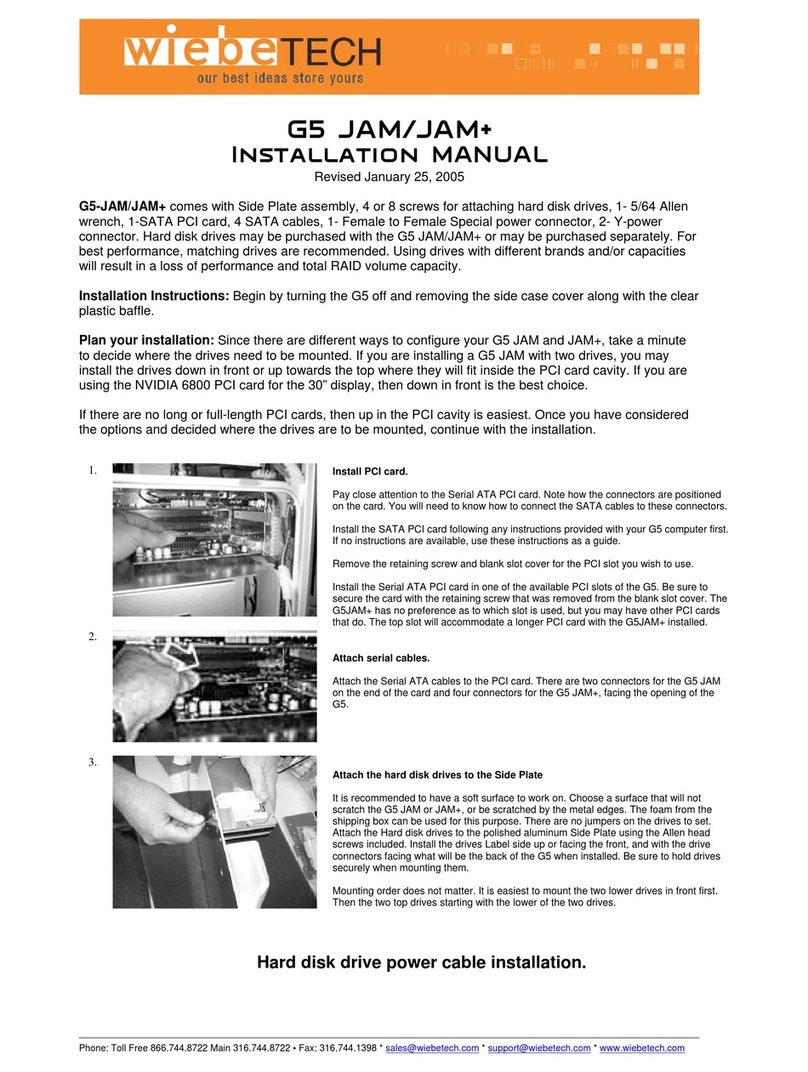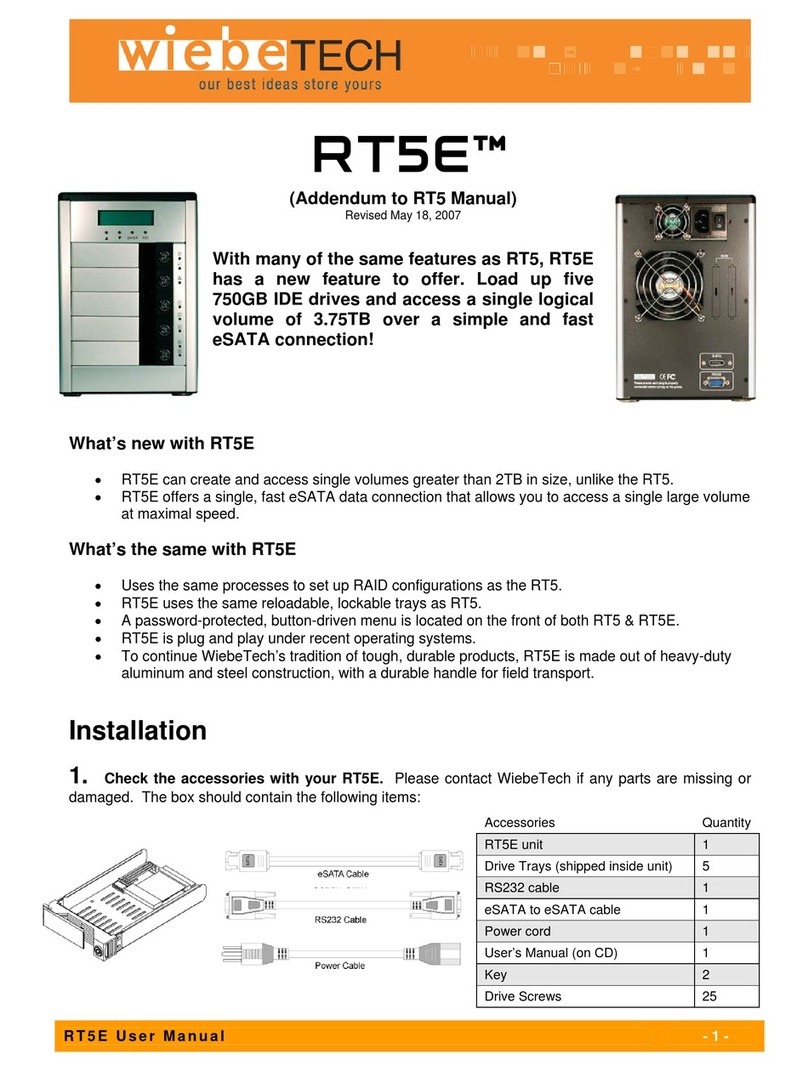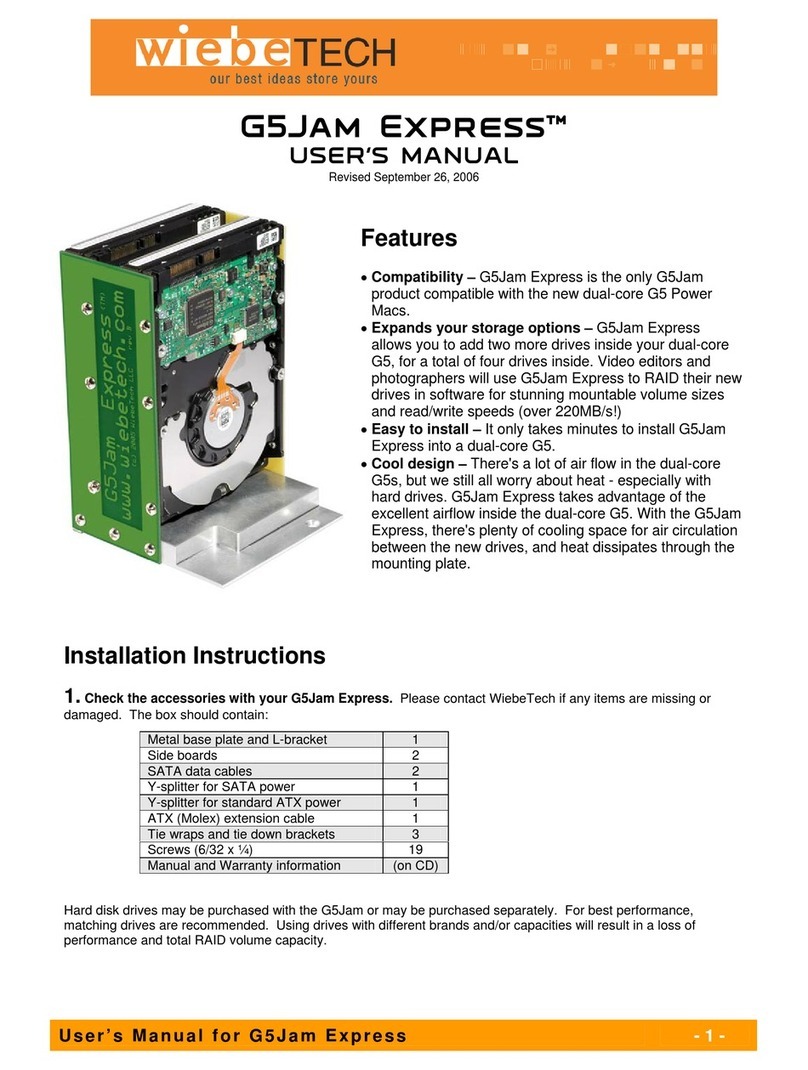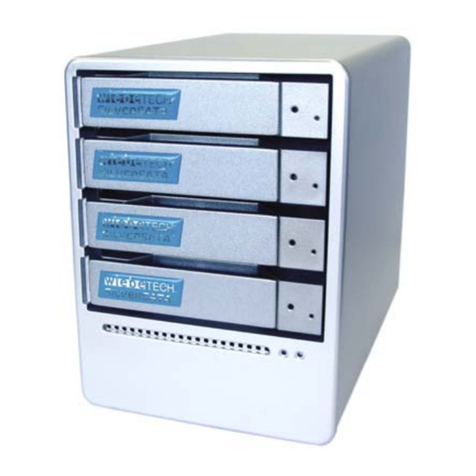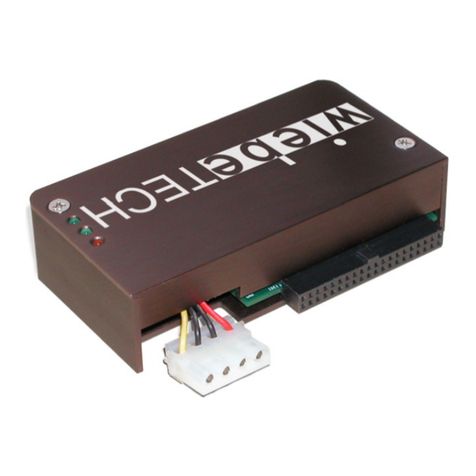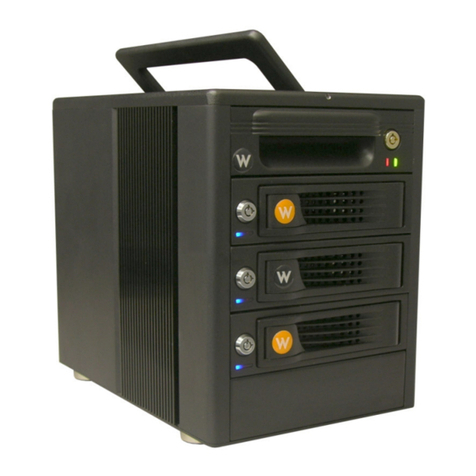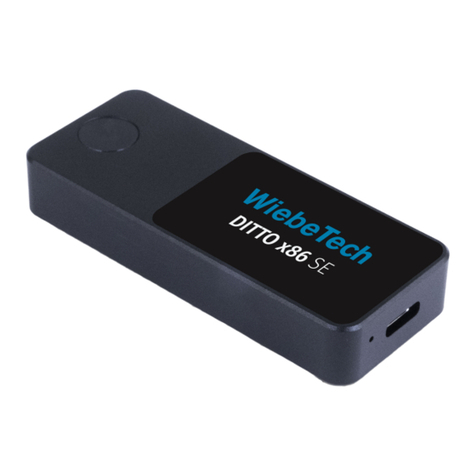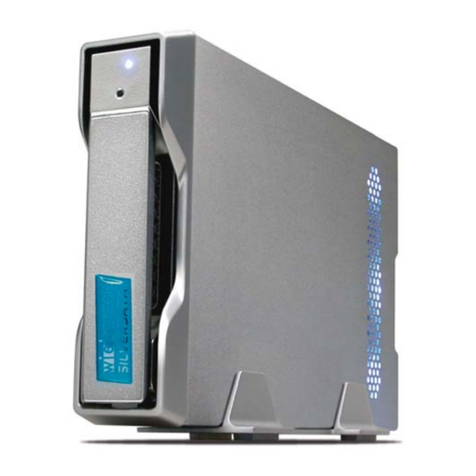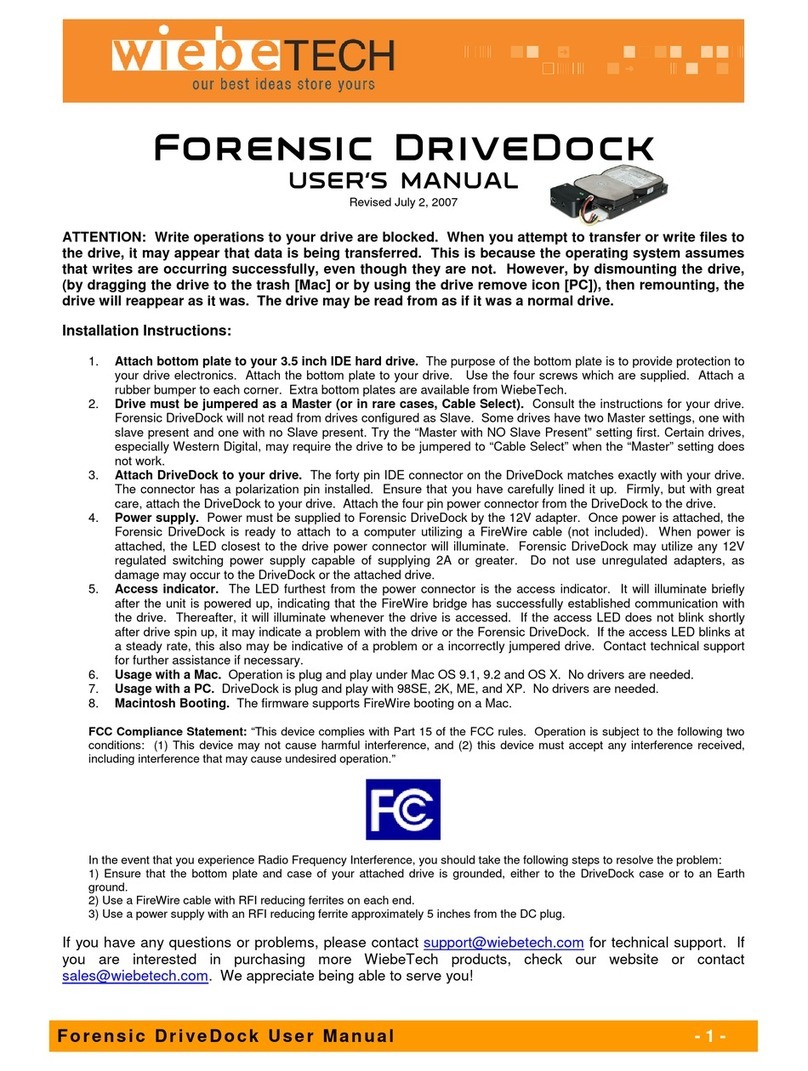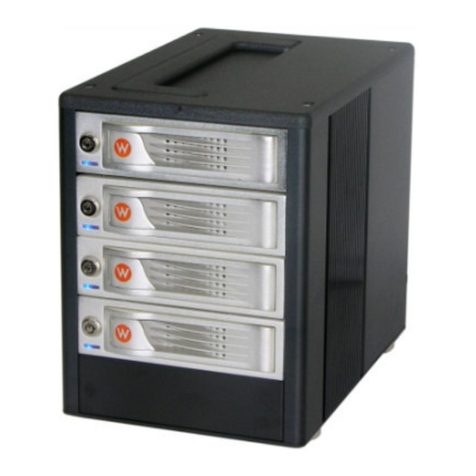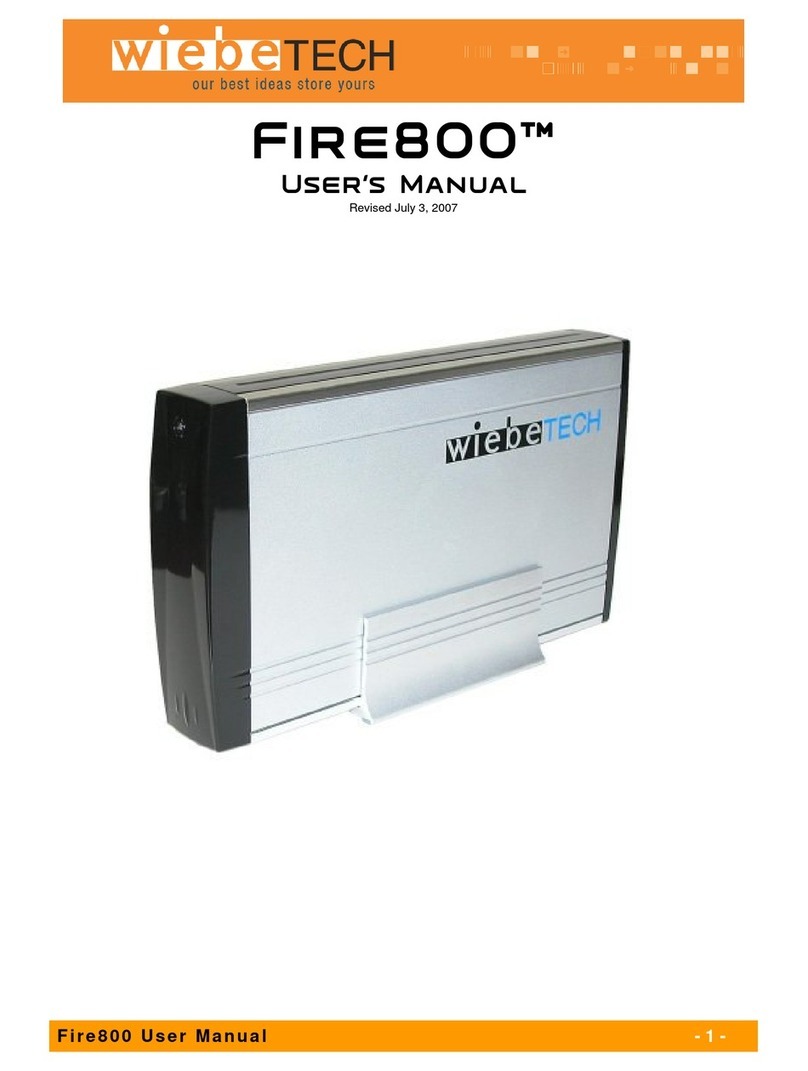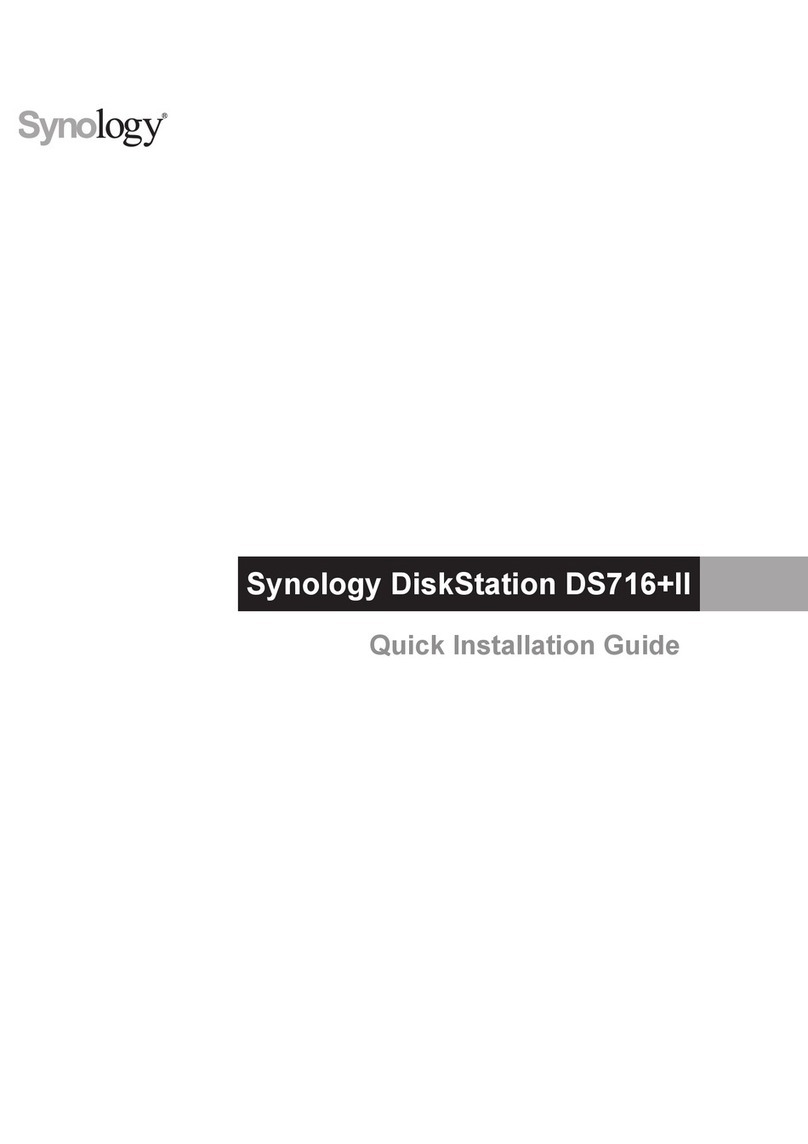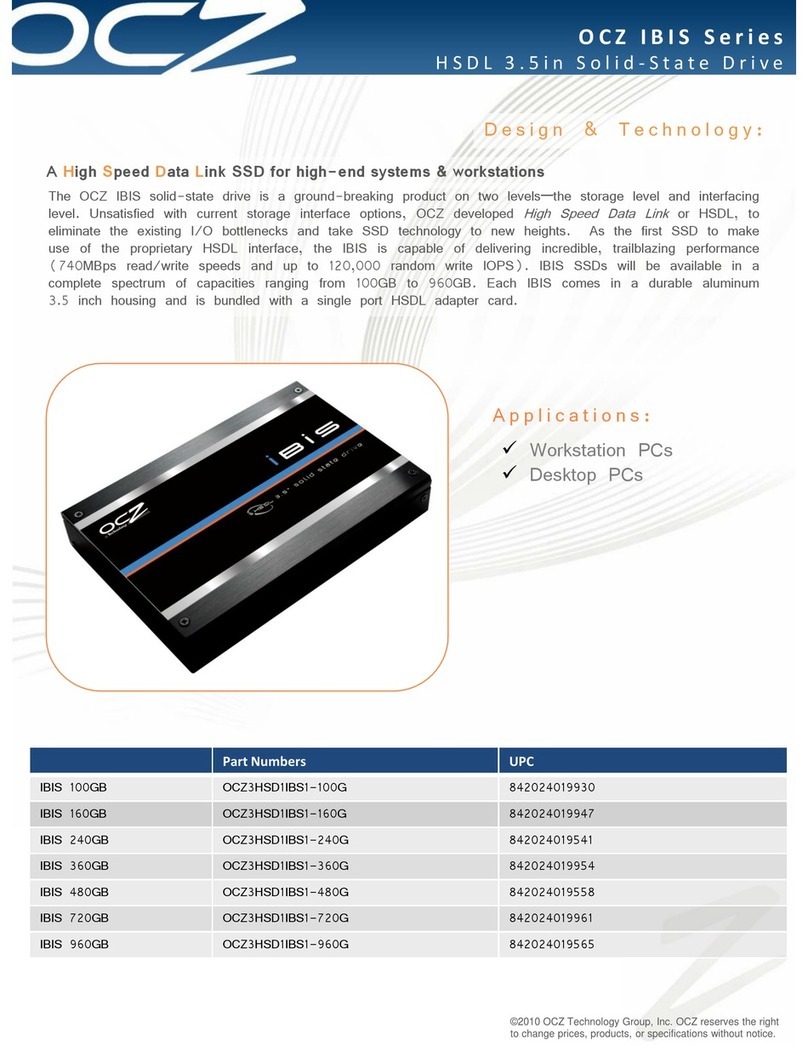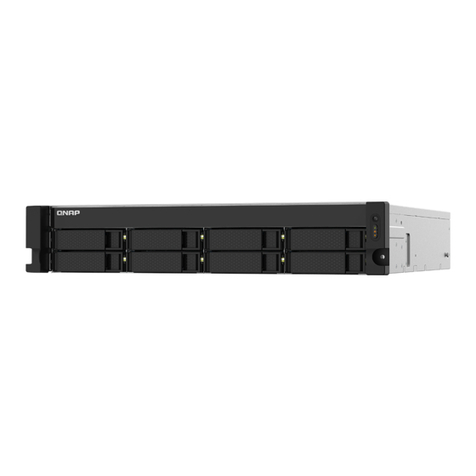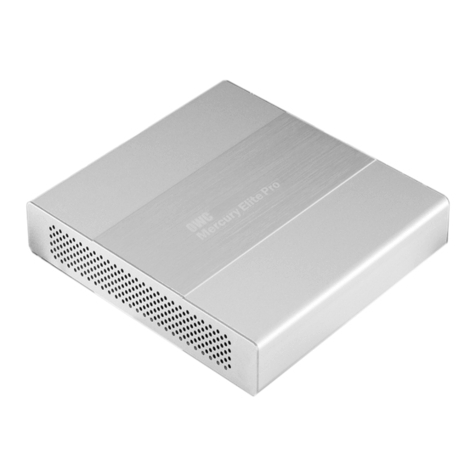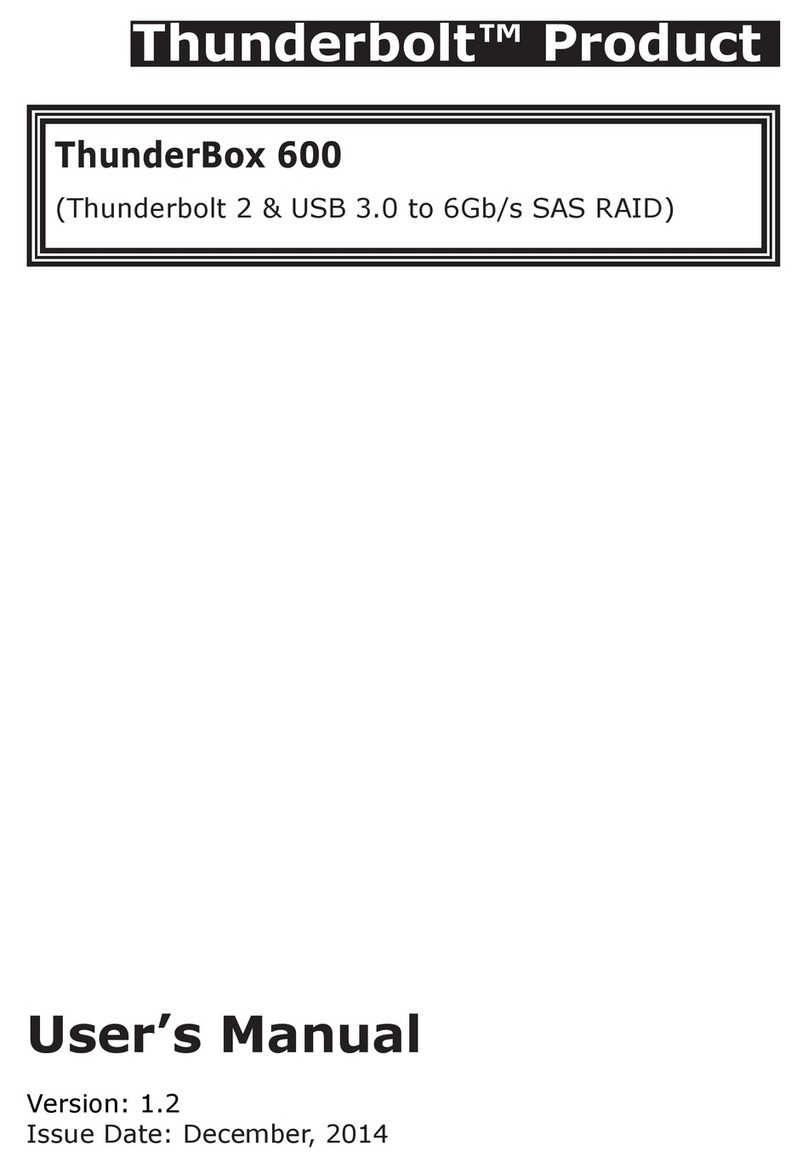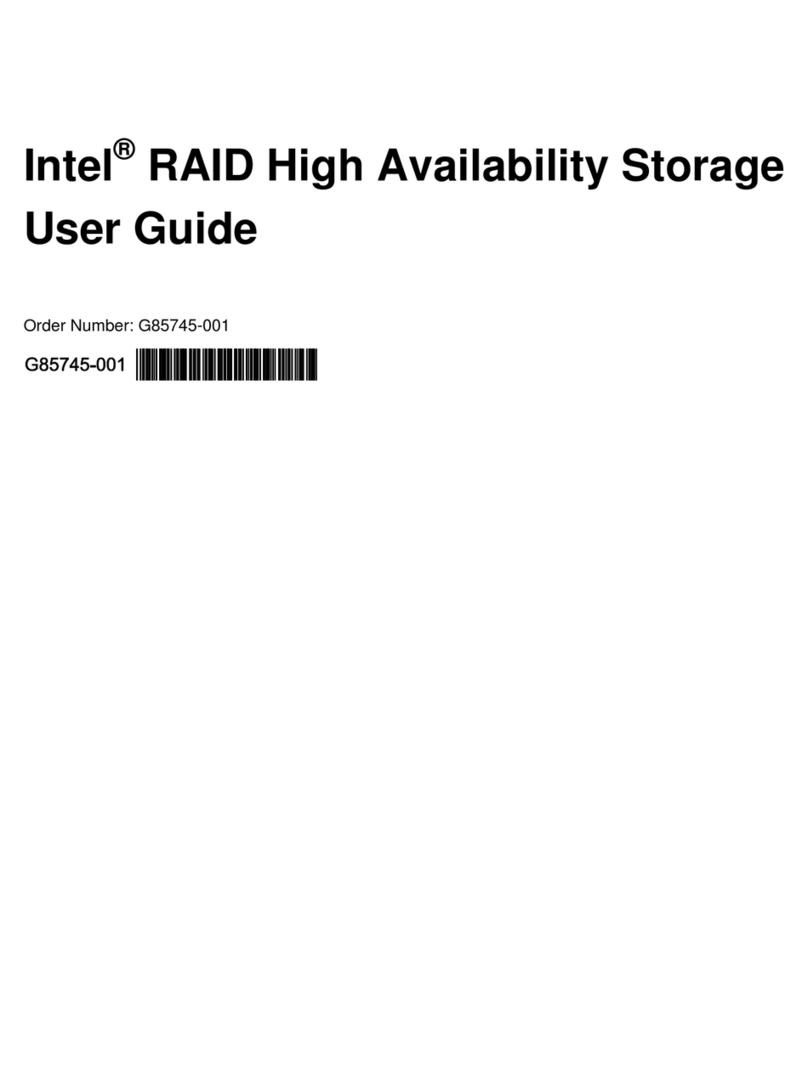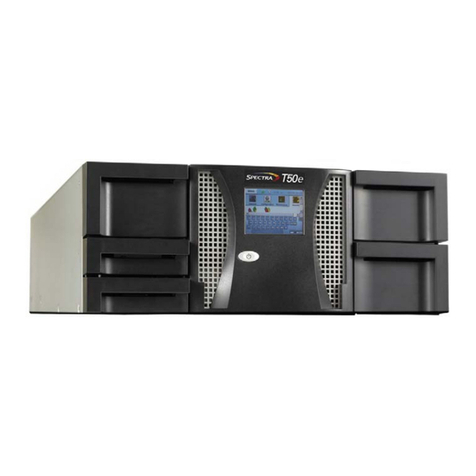
WiebeTech LLC
SilverSATA V-UR User’s Manual - 10 -
port to implement Bootable CD VT-100, VT-100 Terminal and HTTP proxy browser-based
management utility.
1.2.3 Controller Firmware
The system provides RAID levels 0, 1 (0+1), 3, and 5 RAID configurations. It can be
managed either through the LCD control panel or by the system-embedded configuration
utilities. Its high data availability and protection derives from the following capabilities:
Online Capacity Expansion, Online RAID Level Migration, Dynamic Volume Extension,
Array Roaming, Global Online Spare, Automatic Drive Failure Detection, Automatic Failed
Drive Rebuilding, Disk Hot Spare, and Instant Availability/Background Initialization.
The SilverSATA V-UR firmware is stored on the controller flash ROM and is executed by
the RISC CPU. The firmware can also be updated through the RS-232 port without the
need to replace any hardware chips. During the controller ROM flash process, it is possible
for a problem to occur resulting in corruption of the controller firmware. Corrupted firmware
in the controller firmware would make the controller inoperable and bring the system down.
The Redundant Flash provides a unique redundancy feature that helps ensure against
controller availability. This reduces the risk of system failure due to firmware crash. In
addition to the stored programs in ROM, the NVRAM stores information.
1.3 RAID Concept
1.3.1 RAID Set
A Raid Set is a group of disks containing one or more volume sets. It has the following
features in the RAID controller. A volume set must be created either on an existing raid set
or on a group of available individual disks (disks that are not yet a part of any raid set). If
there are pre-existing raid sets with available capacity and enough disks for specified RAID
levels desired, then the volume set will be created in the existing raid set of the user’s
choice. If physical disk of different capacity are grouped together in a raid set, then the
capacity of the smallest disk will become the effective capacity of all the disks in the raid
set.
1.3.2 Volume Set
A Volume Set is seen by the host system as a single logical device. It is organized in a
RAID level with one or more physical disks. RAID level refers to the level of data
performance and protection of a Volume Set. A Volume Set capacity can consume all or a
portion of disk capacity available in a RAID Set. Multiple Volume Sets can exist on a group
of disks in a Raid Set.
In the illustration below, Volume 1 can be assigned a RAID 5 level of operation while
Volume 0 might be assigned a RAID 0+1 level of operation.
1.3.3 Ease of Use Features
1.3.3.1 Instant Availability/Background Initialization
RAID 0 and RAID 1 volume set can be used immediately after the creation. But the RAID
3 and 5 volume sets must be initialized to generate the parity. In the normal initialization,
the initialization proceeds as a background task, the volume set is fully accessible for
system reads and writes. The operating system can instantly access to the newly created
arrays without requiring a reboot and waiting for the initialization completion. Furthermore,
the RAID volume set is also protected against a single disk failure while initializing. In fast
initialization, the initialization process must be completed before the volume set ready for
system access.


